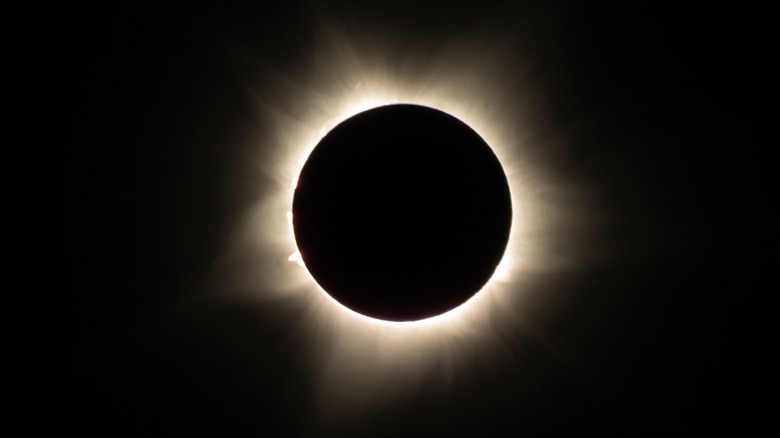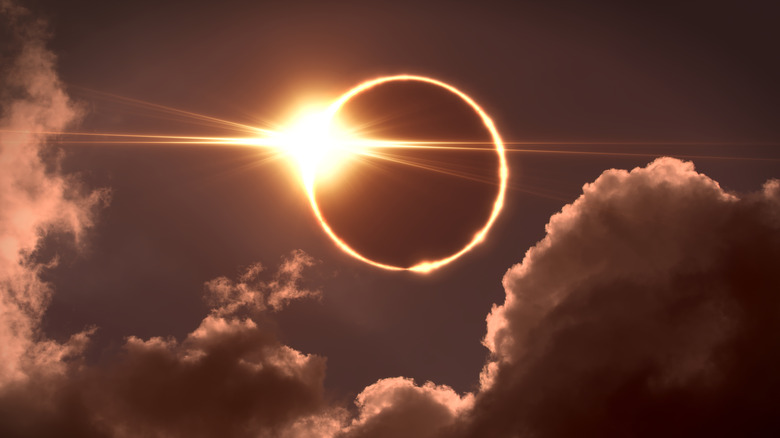During This Year's Eclipse, Watch Closely For This Mysterious Phenomenon
On April 8, much of North America is in for an infrequent and quite breathtaking cosmic event. The moon will pass over the sun, creating a total solar eclipse in specific regions at specific times. For those hoping to witness this remarkable moment, there are multiple times and places where the eclipse will be visible. Of course, the visual of the eclipse is just one aspect of the overall experience that folks can anticipate. There's also a mysterious phenomenon known as "eclipse wind" to be mindful of.
Yes, with the eclipse comes a strange wind pattern that's been appropriately dubbed eclipse wind. During an eclipse, like the unmissable one that's about to happen, it's not uncommon for wind speeds to suddenly drop and for wind to even change direction until the event concludes. Eclipse wind has confused the scientific community for centuries and filled those unexpectedly impacted by it with an eerie sensation. Even 18th-century astronomer Edmund Halley felt this chilling, direction-changing wind and observed the somewhat horrified reactions from common people during an eclipse in his time.
So, has the scientific world made any progress in figuring out the mystery behind eclipse wind? Only in recent years have scientists begun to piece together how it works and why it might occur.
The cause of eclipse wind
In the many, many years since eclipse wind was first recorded, scientists have done their best to determine what causes it to occur. Thankfully, findings have determined that eclipse wind is no strange cosmic coincidence. Rather, it likely has to do with the moon's positioning in front of the sun and its impact on Earth's temperature. Professor Giles Harrison and Professor Suzanne Gray reached such a conclusion while examining data gathered by the U.K.'s Meteorological Office weather stations and roadside weather sensors.
"As the sun disappears behind the moon the ground suddenly cools, just like at sunset. This means warm air stops rising from the ground, causing a drop in wind speed and a shift in its direction, as the slowing of the air by the Earth's surface changes," explained Harrison in a University of Reading press release in 2016, noting that he found his and Gray's research to be something of a continuation of Edmund Halley's work on the subject. Of course, in the realm of science, all that's for sure is that nothing is, so perhaps years from now we'll learn more about the specifics of eclipse wind and discover if Harrison and Gray's explanation is truly accurate.
With all of that in mind, come April 8, it would be wise to not only find a pair of glasses to safely view the solar eclipse, but prepare for some sudden changes in the wind as well.

